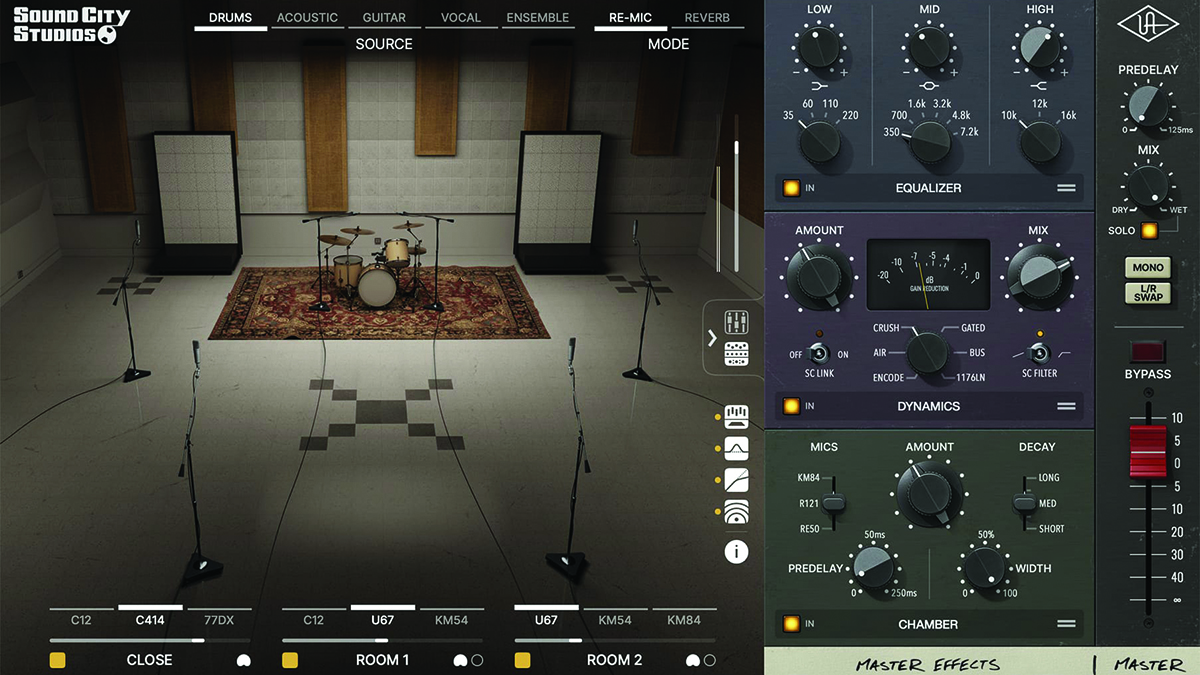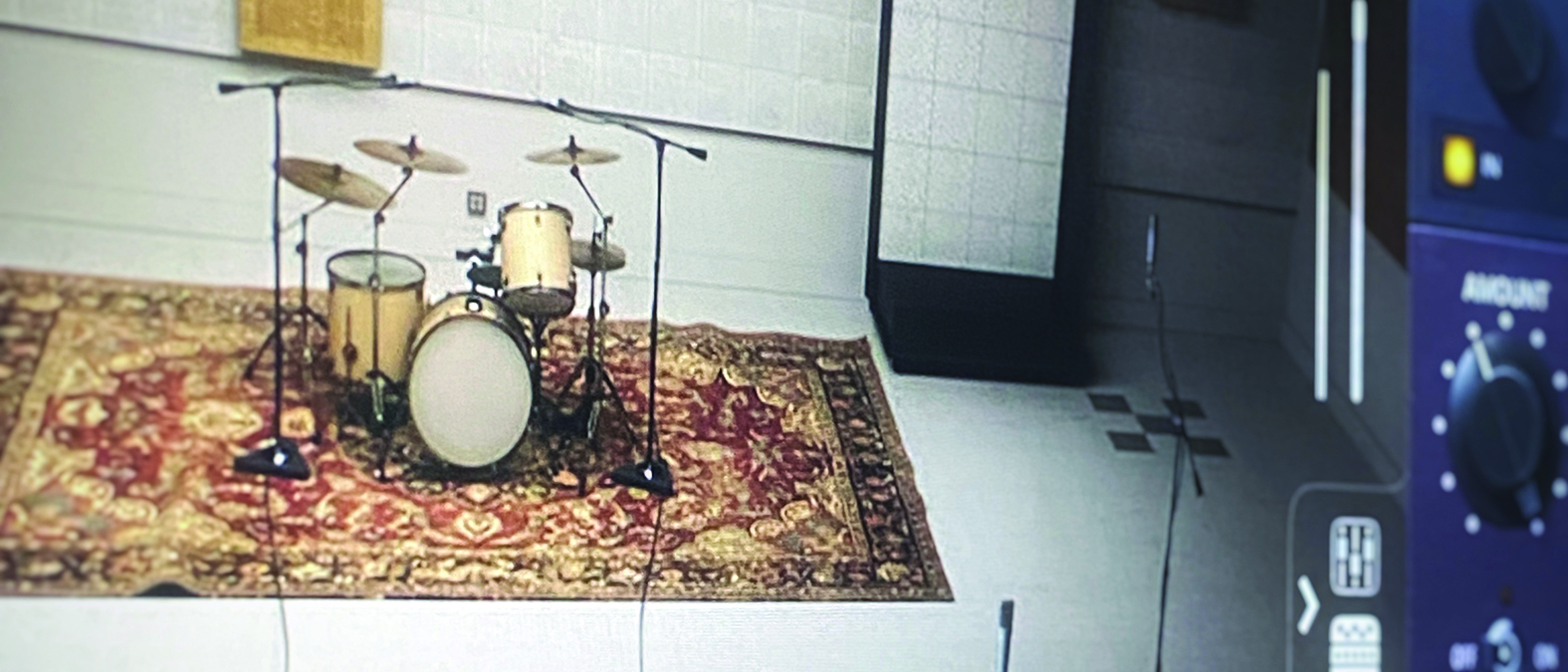MusicRadar Verdict
Dream of recording in a prestige studio? This easy-to-use software may be your ticket to the big time for a (relatively) attainable price.
Pros
- +
The Sound City DNA, applied to your own tracks. Is it faithful? Absolutely.
- +
Way more than just a reverb. Plenty of mic options, an emulation of Sound City’s reverb chamber, plus dynamics and EQ.
Cons
- -
A lot to get your head around with tweak-ability at every turn. But it’s easy to use and UA has stocked Sound City with dozens of presets.
- -
Not cheap at the full price, but UA offers regular reductions throughout the year, and it’s included in a Spark subscription.
MusicRadar's got your back
Universal Audio Sound City Studios: What is it?
If you have even a passing interest in the recording of rock, there’s a very strong chance you’ve heard of Sound City Studios; Tom Petty and The Heartbreakers, Fleetwood Mac, Rage Against The Machine, Metallica are just a few of the artists who have holed up at Sound City. But, perhaps most famously, it was the studio used to record Nirvana’s Nevermind, and Dave Grohl himself immortalised Sound City in his documentary of the same name.
Now, those wizards at Universal Audio have captured the qualities of Sound City’s Studio A and made them available as a plugin for us to immerse our tracks in rock history. It’s available as a native plugin, and works on the same principle as UA’s other ‘room modellers’, offering two modes of use. First is Re-Mic, which virtually places your audio tracks in the environment. The second is Reverb mode, which blends the Sound City-effected signal back in with your original signal.

Universal Audio Sound City Studios: Performance and verdict
Inside the plugin, we’re presented with a ‘Studio View’. From here, you can select the source that you’re applying the room sound to (drums, acoustic, guitar, ensemble). Each of these is configured for the application, with multiple options per category using different parts of the room, introducing gobos and offering different microphone selections.
At the bottom of the screen, there are controls for three virtual mic positions: Close, Room 1 and Room 2, with the ability to change the mic type from a top-class menu of models from AKG, Neumann, Shure, RCA, Beyerdynamic and more. These are pre-configured to their positions, based on tried-and-tested configurations used by engineers who have used Sound City. So while positions are swappable, you can’t go completely à la carte.
The virtual mics can be moved on this screen by simply dragging them closer to, or farther from the source. In addition to this, where applicable, you can change the mic’s polar pattern, as well as the volume blend-all from the Studio View.
There’s also a mixer section, which gives mic-distance control on a dial, plus the ability to time-align the three sets of mics, along with high and low-pass filters and phase-inversion per-channel. It’s also equipped with a set of processing modules including a three-band EQ, compressor, and an emulation of Sound City’s reverb chamber.
That’s a lot. But in use, it’s all very easy: select a mic, move it (or don’t) and blend them together. We tried it on a number of sources including acoustic drums, guitar and vocals, and while we’ve witnessed UA’s room-capturing magic before, it’s still mind-boggling when you load it up. Most impressive was the effect it had on our drum tracks, which, as is often the case, were captured in a small space without a lot of physical distance needed for a large room sound. Used in Re-Mic mode, it applies an entirely new shape to the sound, adding size and air, and a gloss of ‘big budget’ to our modest drum recordings. At times, it can be a bit too much – similar to having a reverb depth set too high, but this is easily alleviated via channel filters, EQ and time alignment (if you want to clean up the natural time distance between each mic position).
Want all the hottest music and gear news, reviews, deals, features and more, direct to your inbox? Sign up here.
Overall, Sound City Studios is a huge weapon in the arsenal of anyone recording in small spaces. There are so many ways to use it: on individual tracks, stereo or group busses as an immersive replacement, or as a parallel bus blended in with your dry tracks, and that’s before you even start tweaking the specifics. UA offers a free trial, and we dare say that once it’s run out, you’ll miss it enough to buy it outright.
MusicRadar verdict: Dream of recording in a prestige studio? This easy-to-use software may be your ticket to the big time for a (relatively) attainable price.
Universal Audio Sound City Studios: The web says
"UAD Sound City Studios Plug-in is a stunning piece of software and modeling, and its ability to transform an ordinary track into something bigger and better makes it a most potent music production tool."
MIX
Universal Audio Sound City Studios: Hands-on demos
Universal Audio
White Sea Studio
Colt Capperrune
Andrew Masters
Universal Audio Sound City Studios: Specifications
- KEY FEATURES: Sound City room emulation with placeable vintage microphone locker, reverb chamber, EQ and dynamics processing.
- CONTACT: Universal Audio

Stuart has been working for guitar publications since 2008, beginning his career as Reviews Editor for Total Guitar before becoming Editor for six years. During this time, he and the team brought the magazine into the modern age with digital editions, a Youtube channel and the Apple chart-bothering Total Guitar Podcast. Stuart has also served as a freelance writer for Guitar World, Guitarist and MusicRadar reviewing hundreds of products spanning everything from acoustic guitars to valve amps, modelers and plugins. When not spouting his opinions on the best new gear, Stuart has been reminded on many occasions that the 'never meet your heroes' rule is entirely wrong, clocking-up interviews with the likes of Eddie Van Halen, Foo Fighters, Green Day and many, many more.
